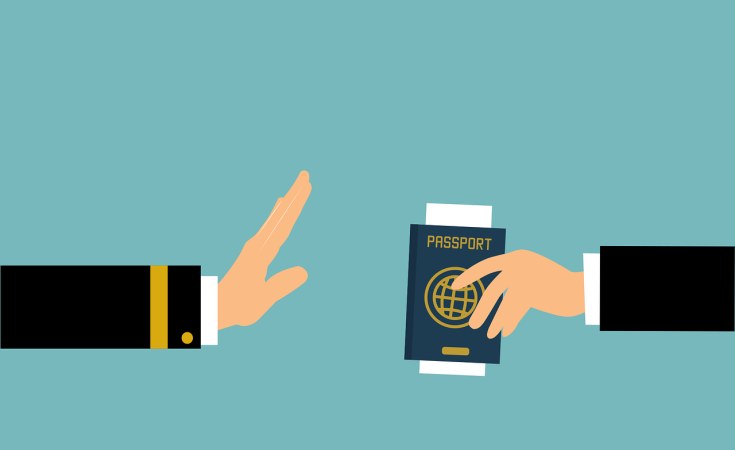The Economic Cost of Loneliness

The Economics of Loneliness: How Social Isolation Is Costing Billions
Loneliness is often regarded as a private, emotional condition—an intermittent discomfort experienced during quiet moments or after missed social interactions. Yet loneliness is not merely a feeling; it is an expanding phenomenon that influences economic systems, strains public budgets, and drains billions from national healthcare expenditures.
In an era marked by unprecedented digital connectivity, where social platforms promise community and friendship, rates of loneliness are increasing, imposing substantial costs on society.
A Costly Epidemic
Image Credit: Unsplash
Loneliness has reached epidemic proportions. In the United States, nearly half of all adults report regular feelings of loneliness. The United Kingdom has acknowledged this crisis to the extent of appointing a Minister for Loneliness in 2018. In Japan, the phenomenon of “kodokushi,” or lonely death, has emerged in response to growing isolation among elderly populations.
Contrary to common assumptions that loneliness predominantly affects older adults, young adults are among the most vulnerable. The rise of remote work, prolonged screen time, and urban anonymity has resulted in a paradox: greater digital connectivity coincides with deeper emotional isolation.
The economic consequences of loneliness are significant, exerting a profound drag on productivity and healthcare systems alike.
Loneliness as a Public Health Crisis
Research increasingly frames loneliness as a chronic health risk with implications comparable to established diseases. Studies have shown that social isolation poses health risks equivalent to smoking 15 cigarettes daily. This correlation has severe fiscal implications.
In the United States, Medicare expenditures on socially isolated older adults exceed $7 billion annually. These individuals demonstrate higher rates of emergency room visits, extended hospital stays, and increased demand for medical care. Comparable strains are evident in the United Kingdom’s National Health Service, as well as in healthcare systems across Canada, Australia, and Europe.
Moreover, loneliness among younger populations contributes to elevated stress, anxiety, and substance use—conditions that necessitate additional healthcare resources and funding.
While loneliness does not appear explicitly on medical bills, its impact permeates healthcare spending.
The Productivity Costs of Loneliness
Image Credit: Unsplash
Employee disengagement fueled by loneliness diminishes workplace productivity. Research by Cigna indicates that over 60 percent of American workers experience loneliness, a trend not confined to remote work environments but prevalent even in physically crowded offices.
Lonely employees exhibit higher absenteeism, greater turnover, and lower engagement levels. The cumulative effect is a significant reduction in productivity, resulting in billions of dollars lost in annual revenue. Despite this, many corporations regard loneliness as a peripheral issue, often relegated to human resources without recognition of its bottom-line impact.
Yet evidence suggests that connected and satisfied employees are consistently more productive. Currently, many organizations face unseen losses driven by social fragmentation.
Loneliness and Public Welfare Expenditures
The effects of loneliness extend beyond healthcare and employment. Social isolation correlates with increased reliance on public assistance programs including housing and unemployment benefits. Isolated individuals often lack the social networks necessary for securing employment or navigating public services.
In response, governments in Europe, Asia, and North America have initiated programs aimed at reducing loneliness—such as community gardens and subsidized transportation for seniors. Although these initiatives involve upfront costs, the fiscal alternative of ignoring loneliness is substantially greater, manifesting in increased emergency service use, chronic illness prevalence, and social instability.
When viewed through this lens, investment in social infrastructure emerges as both a moral and fiscal imperative.
Economic Behavior and the “Loneliness Economy”
Loneliness also alters consumer behavior. Some individuals respond with compulsive spending on digital entertainment and delivery services, while others withdraw economically by reducing expenditures and avoiding social environments. These behaviors contribute to economic distortions in communities with high loneliness levels, characterized by diminished local commerce, weaker civic engagement, and eroding public trust.
Simultaneously, a new sector—the “loneliness economy”, is rapidly expanding. This market includes digital companionship, artificial intelligence friends, and social applications designed to simulate intimacy. This raises critical questions regarding the commodification of social connection.
Designing Loneliness Out of Society
Some experts propose addressing loneliness as a structural flaw amenable to design solutions. Urban planners advocate for walkable neighborhoods, shared housing models, and public spaces that encourage organic social interaction. Similarly, certain workplaces are experimenting with intentional social design through collaborative environments and mentorship programs.
Policy scholars suggest recognizing social capital as a public good comparable to education or clean water. Evidence indicates that strong social connections contribute to improved health, productivity, and reduced dependence on government support.
This approach does not seek to mandate extroversion but rather to cultivate environments conducive to genuine human connection.
The Hidden Cost of Ignoring Loneliness
In an era preoccupied with GDP growth and technological advancement, the gradual erosion of human bonds remains an overlooked economic threat. Loneliness has evolved from a personal affliction into a public issue with substantial economic consequences. The effects are visible across healthcare institutions, workplaces, and local economies.
Addressing loneliness will require considerable resources. However, the cost of inaction—already measured in billions of dollars—is likely to escalate.
It is imperative to move beyond viewing loneliness as a mere byproduct of modern life and recognize it as one of the most pressing economic challenges of our time.
Conclusion
The costs of loneliness are not just numbers on a balance sheet, they represent real people struggling with isolation and its ripple effects on their health, work, and communities.
As loneliness grows in a world more connected than ever, it exposes a fundamental gap between digital ties and meaningful human relationships.
Tackling this challenge means rethinking how we design our cities, workplaces, and social systems to foster genuine connection.
You may also like...
Super Eagles' Shocking Defeat: Egypt Sinks Nigeria 2-1 in AFCON 2025 Warm-Up

Nigeria's Super Eagles suffered a 2-1 defeat to Egypt in their only preparatory friendly for the 2025 Africa Cup of Nati...
Knicks Reign Supreme! New York Defeats Spurs to Claim Coveted 2025 NBA Cup

The New York Knicks secured the 2025 Emirates NBA Cup title with a 124-113 comeback victory over the San Antonio Spurs i...
Warner Bros. Discovery's Acquisition Saga: Paramount Deal Hits Rocky Shores Amid Rival Bids!

Hollywood's intense studio battle for Warner Bros. Discovery concluded as the WBD board formally rejected Paramount Skyd...
Music World Mourns: Beloved DJ Warras Brutally Murdered in Johannesburg

DJ Warras, also known as Warrick Stock, was fatally shot in Johannesburg's CBD, adding to a concerning string of murders...
Palm Royale Showrunner Dishes on 'Much Darker' Season 2 Death

"Palm Royale" Season 2, Episode 6, introduces a shocking twin twist, with Kristen Wiig playing both Maxine and her long-...
World Cup Fiasco: DR Congo Faces Eligibility Probe, Sparks 'Back Door' Accusations from Nigeria

The NFF has petitioned FIFA over DR Congo's alleged use of ineligible players in the 2026 World Cup playoffs, potentiall...
Trump's Travel Ban Fallout: African Nations Hit Hard by US Restrictions

The Trump administration has significantly expanded its travel restrictions, imposing new partial bans on countries like...
Shocking Oversight: Super-Fit Runner Dies After Heart Attack Symptoms Dismissed as Heartburn

The family of Kristian Hudson, a 'super-fit' 42-year-old marathon runner, is seeking accountability from NHS staff after...
.png&w=1920&q=75)






